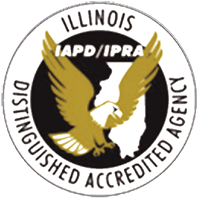ACCESSIBILITY
The Park District of Oak Park plays an important role in our community. The District enhances residents’ lives and strengthens the community by protecting and preserving our environment and providing recreational opportunities and programs for all Oak Park residents. The material below outlines some of the District’s contributions.
For more information, contact:

Special Recreation Programs
The Board recognizes the need to provide quality recreation for special populations within the District using the available financial resources. The District participates as a member of the West Suburban Special Recreation Association (WSSRA) and cooperates with its partner districts to ensure professional consideration and inclusion for all residents with disabilities. By participating in this association, the District can meet its responsibilities by offering programs through this cooperative special recreation association when doing so is more economical or viable than an “in-District” program.
Each year, the Park District Board appoints a member to represent the District on the WSSRA Board. The District meets its financial obligations to the WSSRA primarily through a tax levy. The resulting tax receipts are forwarded to the WSSRA according to an agreement between the Special Recreation Association and the Park District.
Americans With Disabilities Act
The District acknowledges and supports the Americans with Disabilities Act (42U.S.C. 12131 “ADA”) and prohibits discrimination on the basis of disability in the services, programs, or activities of the District. The District will make all reasonable accommodations to facilitate community access and full participation by citizens.
The Board empowers the Executive Director of the District to designate an employee or employees to coordinate the District’s efforts to comply with and carry out its responsibilities under ADA, including granting the authority to appoint a staff member to serve as the ADA Coordinator for the District.
The Americans with Disabilities Act (ADA) requires transition plans be developed for state and local governments and their departments. Title II addresses the requirements for all levels of state and local governments to plan and implement a process for removal of accessiblity barriers. Transition plans are both a planning tool and public document.
Service Animals
The Department of Justice (DOJ) has amended Title II of the Americans with Disabilities Act (ADA) with a final rule related to “service animals” (See § 35.136 Service Animals of the Revised Title II ADA Regulations). The DOJ has defined “service animals” as a dog that has been individually trained to do work or perform a task that benefits an individual with a disability. The dog is not a pet since it has a specific job or task to perform. The rule states that other animals, whether wild or domestic, do not qualify as a service animal. Dogs that are not trained to perform tasks that assist a person related to their disability, including emotional support, are not considered a service animal. The rule has clarified that a person with a mental disability that uses a service animal is protected under the ADA. In addition, a miniature horse can be used as an alternative service animal but is subject to certain limitations.
Some examples of the tasks that a service dog can perform include but are not limited to:
- Alerting a person with hearing impairments to sounds.
- Pulling wheelchairs or carrying and picking up things for a person with a mobility impairment.
- Assisting a person with mobility impairment with balance.
- Guiding a person with a visual impairment.
It should be noted that there is presently no national standards related to the certification or training of a service animal. Many different organizations and individuals train service animals. Some but not all service animals can be recognized by several means:
- Some but not all will wear a special collar or harness.
- Some but not all are licensed, certified and/or have identification papers.
There are only two questions that can be asked to determine if the dog with a person is a service animal.
- You may ask if the animal is a service animal required because of a disability.
- You may ask if the animal performs a specific task for the person.
No other questions about the person’s disability or additional comments are acceptable to ask under the ADA.
Service animals can be asked to be removed from an area or program in specific situations including:
- The dog is barking.
- The dog is growling.
- The dog is not house broken.
- The dog displays a vicious or aggressive behavior toward other people.
- The dog acts disruptively such as jumping toward or running at other people.
- The area is regulated by health rules that do not allow an animal to enter.
It should also be noted that a person cannot be charged additional fees because they are using a service animal.





